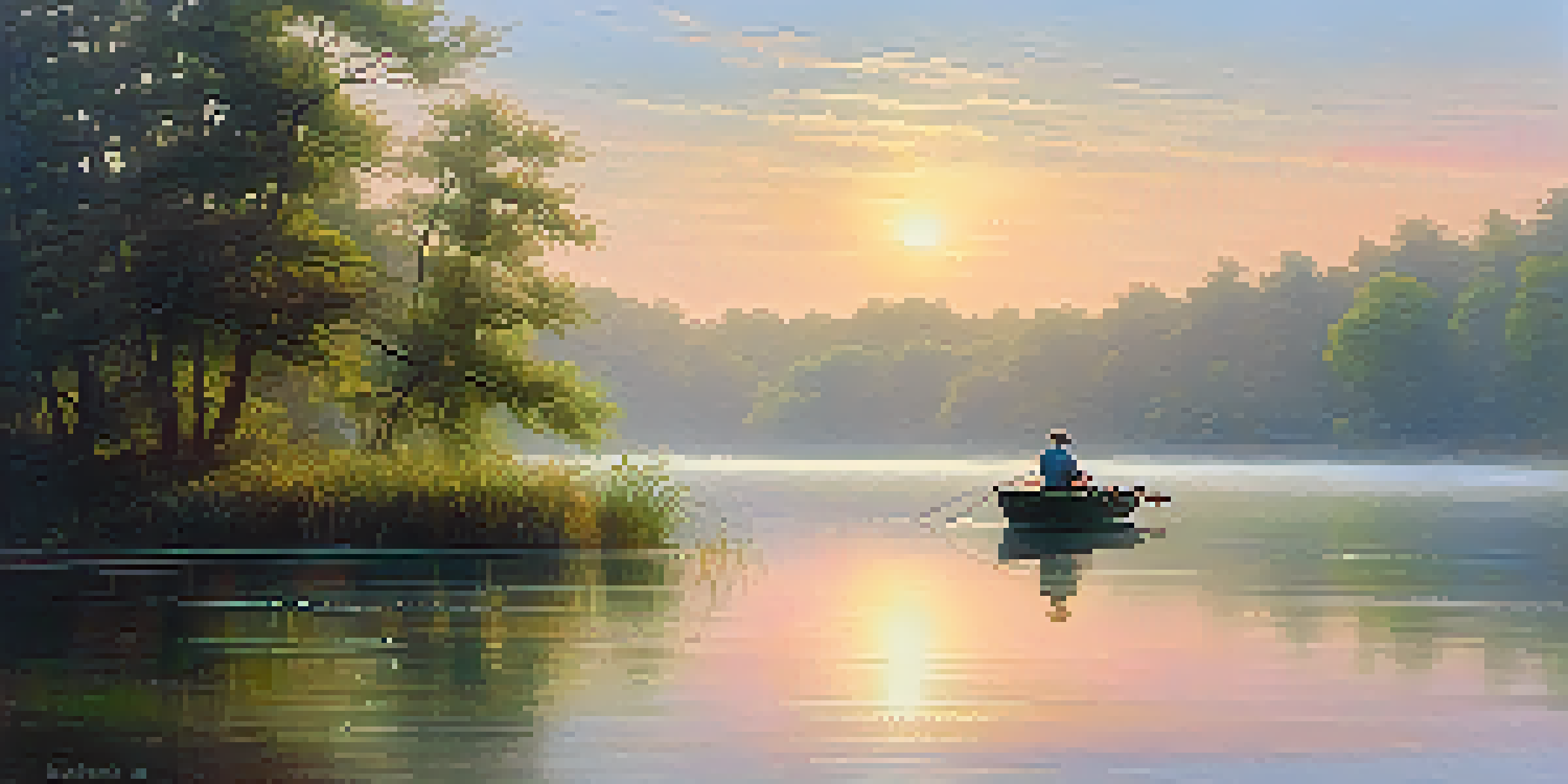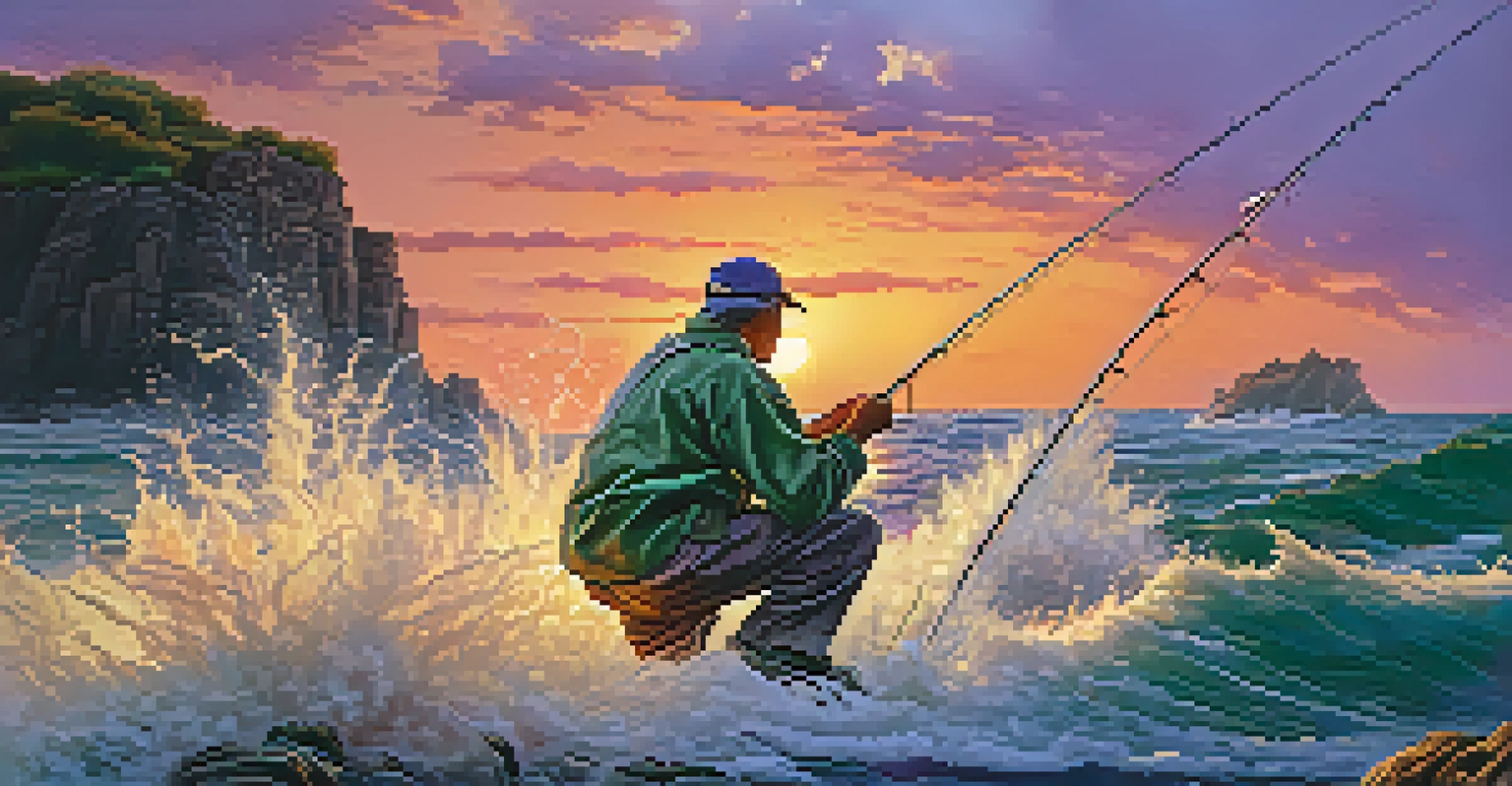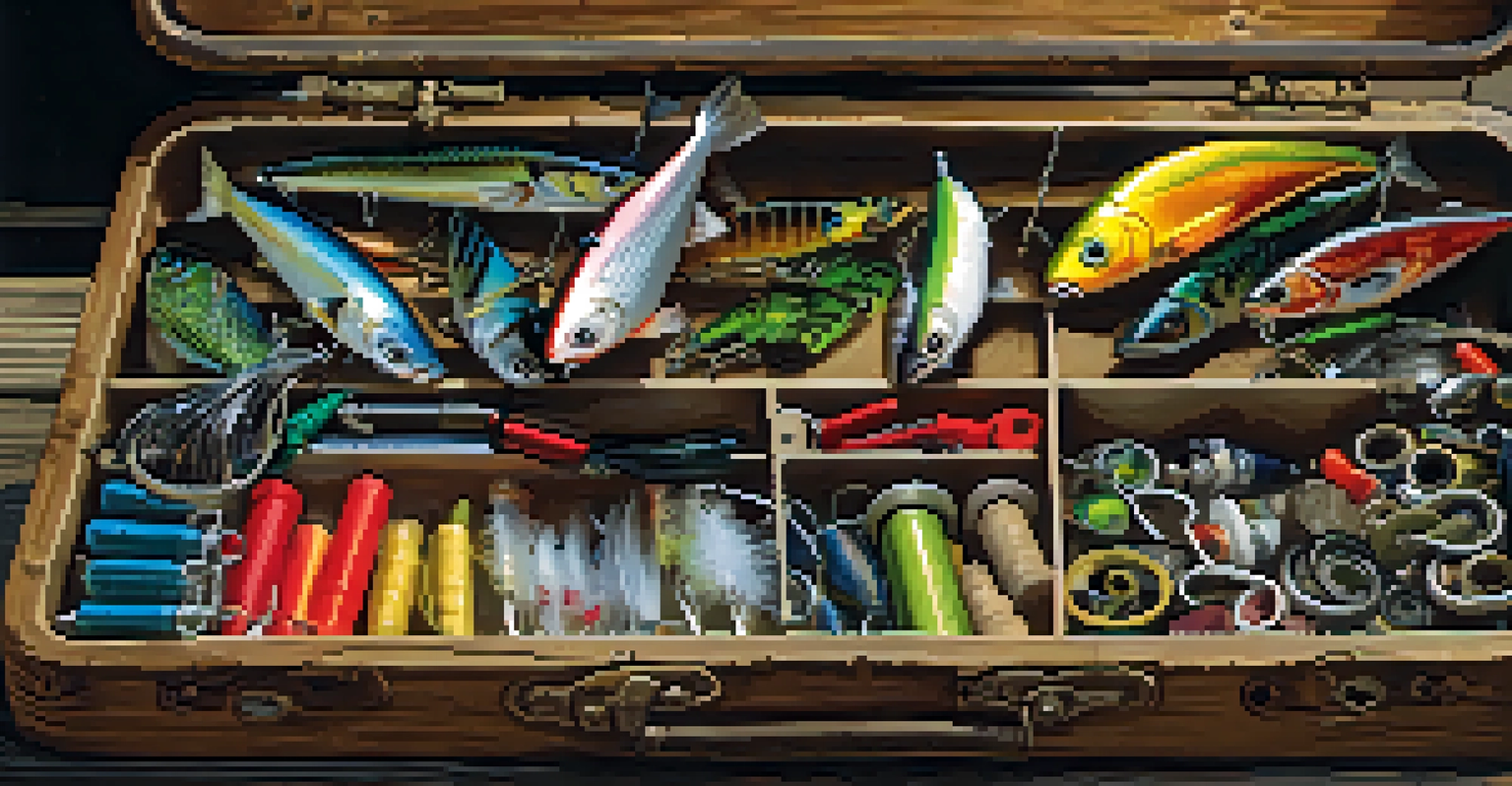Fishing Adventures: Where to Catch the Biggest Fish Nearby

Understanding Local Fishing Regulations and Licenses
Before you embark on your fishing adventure, it's crucial to familiarize yourself with local fishing regulations. Each state or region has its own set of rules regarding fishing seasons, size limits, and the type of gear allowed. Ignoring these guidelines can lead to fines or, worse, harming the local ecosystem.
The fish is not a fish until it is caught.
Licensing is another key aspect to consider. Most areas require anglers to obtain a fishing license, which not only supports conservation efforts but also ensures that you're fishing legally. Check your local wildlife agency's website for specific requirements and any additional permits needed for certain species.
Lastly, keeping up with any changes in regulations can enhance your fishing experience. Subscribe to local fishing newsletters or join community groups where updates are frequently shared. This way, you'll be well-informed and ready for a successful fishing trip.
Top Fishing Spots for Big Catches in Your Area
Now that you're equipped with the knowledge of regulations and licenses, let's explore some top fishing spots known for big catches. Lakes, rivers, and coastal areas often have designated zones where larger fish are more prevalent. Research local fishing reports and ask fellow anglers for their recommendations.

Visit popular fishing websites or forums where enthusiasts share their experiences and success stories. These platforms can provide insights into the best times to fish, the types of bait that work, and even secret spots that are less crowded. You might be surprised at what hidden gems you can discover right in your backyard.
Know Local Fishing Regulations
Familiarizing yourself with local fishing regulations and obtaining the necessary licenses is essential for a legal and responsible fishing experience.
Don't forget to consider seasonal variations as well. Different fish species tend to be more active during particular times of the year. For instance, spring can be prime time for bass fishing, while fall often sees an increase in trout activity. Keep this in mind as you plan your next adventure.
Essential Gear for Catching Bigger Fish
Having the right gear is crucial for a successful fishing adventure, especially if you're aiming to reel in bigger fish. Start with a sturdy fishing rod and reel combo designed for the type of fish you're targeting. For larger species, opt for heavier lines and stronger hooks to withstand the fight.
Fishing is not an escape from life, but often a deeper immersion into it.
Additionally, consider investing in quality tackle and bait. Live bait is often more effective for catching bigger fish, but artificial lures can also do the trick. Experiment with different types to see what works best in your local waters, and don't hesitate to ask for advice at your local bait shop.
Lastly, don't overlook the importance of safety gear. A life jacket, sunscreen, and a first aid kit can make all the difference in ensuring a fun and safe fishing trip. Being prepared means you can focus on what really matters—landing that big catch!
Techniques for Reeling in the Big Ones
When it comes to catching larger fish, having the right techniques can make all the difference. One effective method is to use a technique called 'jigging.' This involves moving your bait up and down in the water to mimic the movement of prey, which can attract curious fish.
Another popular technique is bottom fishing, where you drop your bait to the lake or ocean floor. Larger fish often lurk near the bottom, so this approach can be particularly effective for species like catfish or halibut. Just be sure to monitor your line for any bites.
Select the Right Fishing Gear
Using appropriate gear and tackle is crucial for successfully catching larger fish, ensuring you have the right rod, reel, and bait.
Finally, patience is key. Fishing for bigger fish often requires waiting for the right moment, so don’t rush the process. Enjoy the experience, take in the scenery, and remember that sometimes, the thrill of the catch is as much about the journey as it is about the end result.
Best Times to Fish for Big Catches
Timing can significantly impact your fishing success, especially when targeting larger fish. Early morning and late evening are often considered prime times for fishing, as fish tend to be more active during these hours. The cooler temperatures and lower light conditions make fish more likely to venture out for a meal.
Seasonality also plays a role. For instance, spring spawning periods can lead to increased activity and hungry fish. Likewise, fall is another excellent time as fish prepare for winter and are often found feeding aggressively to stock up on energy.
Additionally, keep an eye on the weather. Fish are sensitive to changes in atmospheric pressure, which can influence their feeding patterns. A few days after a cold front, for example, can often lead to excellent fishing opportunities as fish become more active.
Local Fishing Communities and Resources
Engaging with local fishing communities can enhance your fishing adventures significantly. These groups often provide valuable insights, tips, and support that can help you improve your skills. Whether it's through social media, local clubs, or fishing events, connecting with other anglers can make your experience more enjoyable.
Many communities also host fishing tournaments or events that not only offer a chance to catch big fish but also foster camaraderie among participants. These events can provide a great opportunity to learn from experienced anglers and share stories about your best catches.
Join Local Fishing Communities
Engaging with local fishing groups and resources can enhance your knowledge, skills, and overall fishing adventures.
Don’t forget to utilize local resources such as bait shops and fishing guides. They can offer personalized advice based on current conditions and popular techniques. Building relationships with local experts can give you an edge in finding the best spots and strategies.
Conservation Practices for Sustainable Fishing
As you embark on your fishing adventures, it's important to remember the role you play in preserving our aquatic ecosystems. Practicing sustainable fishing ensures that future generations can enjoy the same experiences. Adhering to catch-and-release practices can help maintain fish populations, especially for larger species that are often overfished.
Another essential aspect of conservation is being mindful of your surroundings. Always clean up after yourself and avoid leaving trash behind. This not only protects the environment but also ensures that the fishing spots remain appealing for others.

Educating yourself about local species and their habitats can also make a significant difference. Understanding which fish are in decline and implementing practices to protect them is key to maintaining a healthy ecosystem. By being a responsible angler, you contribute to the sustainability of our waters for years to come.